Touring around Beijing, you must visit a hutong and live in a siheyuan. A siheyuan is a traditional residential compound in Beijing. Nowadays, most Beijingers live in apartments. Traditional Beijingers, however, miss siheyuans where they lived in their childhood. After all, a siheyuan represents their childhood memories. With the development of the age, it is rare to see a household who owns a siheyuan. If you want to experience the life of a traditional Beijinger, a siheyuan hotel is a good choice. Such a hotel usually hides deep in a hutong. Since it keeps a low profile, you may miss it easily.
Beijing Cours Et Pavillons Boutique Hotel
The luxury boutique hotel of Cours Et Pavillons is transformed from a famous siheyuan. It places emphasis on the outlook, style and displayed items to reach perfection and also puts a lot of attention on the living environment, food and beverage, and amenities provided to their customers. As an old saying goes, “Although it is made by human, yet the effect of which renders it a piece falling from heaven”. You would find merit and fame well hidden inside the hotel. The hotel is managed by Small Luxury Hotels of the World (SLH), headquartered in London, UK. The SLH has a history of more than two decades.
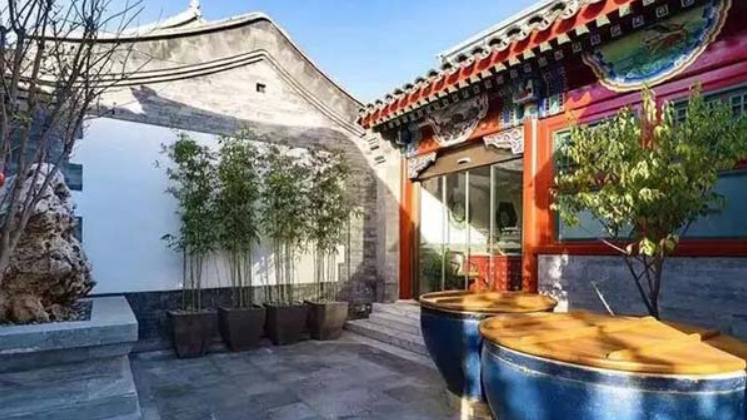
When you push open a glass gate and tap a large vermilion wooden gate, a deep but vigorous sound immediately leaves you in a trance. You are wondering about the story about the heavy wooden gate. As soon as you come into the lobby lounge, you will be fascinated by a glass ceiling. According to the attendant, the owner of the hotel is a fan of the glass ceiling of the British Museum, so it was modeled for the simple and unsophisticated siheyuan. The glass ceiling of the hotel serves as a screen for haze of Beijing and a window to enjoy the beautiful sky on a sunny day. Because the American BLLC ventilation system and point of entry (POE) water purifier are adopted for the whole hotel, every customer has been protected against air and water pollution since he or she enters the hotel.
After you pass through the lobby and enter the back yard, a large standard siheyuan will leap to your eyes. The back yard is surrounded by four distinctive rooms in the east, west, south and north. The East and West Rooms are the basic types. In these rooms, the meiguiyi, a kind of low-back armchair intended for a boudoir in ancient China, doesn’t clash with a traditional European armchair at all. The luodi huazhao (a carved partition frame), made of a large block of Jinsinan wood, is full of classic elegance without any sense of oppression. The bedstead woven with rattan cores in Jiangnan, the area in the south of the lower reaches of the Yangtze River, offers you comfort and good air permeability. The mattresses brimming with restraint and dignity come from HYPNOS, a century-long brand which tailors products by hand and is intended for the British royal family. The burner and incense with calming or refreshing effects are also available for you in the room. The South and North Rooms are large with an area of 100 square meters. A Ming style Huali bed in the North Room is steeped in history. A set of Ming style yuanbaoyuan scented rosewood table and chairs worth of millions of RMB is provided in both the South Room and the North Room. There are also a large antique lacquer trestle table and a birthday plaque dating back to the Emperor Jiaqing’s reign of the Qing Dynasty.
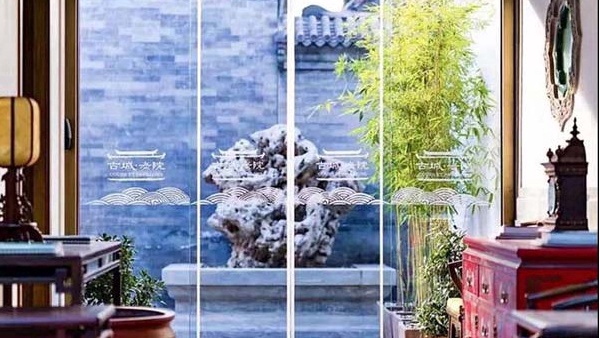
Thanks to the harmony between elegant antiques and modern technologies, you can draw a picture sitting on an antique wooden table worth of millions of RMB or read a book quietly in a traditional Chinese bed with a soft pad; you can also turn on the pop-up rear projection television and watch TV and then lie in a large massage tub and enjoy the flowers and snow by switching on the automatic skylight. What a wonderful life it is!
Besides, the French restaurant on site cannot be ignored. The chef Zak El Hamdou is a British man. He worked for La Tante Claire, a three-Michelin-star restaurant in Chelsea, London and later served as the chef of Dubai Burj Al Arab and made preparations for the popular TRB western restaurant in Beijing.
In the lights and shadows, you may lift up the curtain to know the view outside. Is it the floating petals in spring, the summer times when Summer Solstice has not fallen yet, the falling leaves in autumn, or the gleaming snow in winter? In modern times, you may feel tired for the high-rise buildings here and there. Why don’t you just come to the old courtyard and casually sit here? Like a carefree sage who withdraws from society and lives in solitude, you can choose to boil tea, burn incense, draw a picture or arrange flowers. Whatever you do, the old courtyard is always here for you.
Transportation: Taking Line 5 to Exit D (SW), Zhangzizhonglu Station
Address: No.26, Weijia Hutong, Dongcheng District, Beijing
Zhongtang Courtyard Hotel Beijing
The Zhongtang Courtyard Hotel is located in No.12, Xisi North 2nd Hutong, Xicheng District, Beijing. There is an old saying in Beijing that “a rich man often lives in the eastern part of the city.” The Zhongtang Courtyard Hotel was built in the late Ming Dynasty. It was the former residence of the Prime Minister in the early Ming Dynasty. After vicissitudes of hundreds of years, only the two-tier courtyard is left. The hotel is situated in the living area of the common people in Beijing, adjacent to the Beihai Park and Shichahai Scenic Area. From the hotel, you can see the Temple of the White Dagoba and walk to the Xidan Commercial Street. It is convenient for you to learn the folk culture, enjoy the sunset or engage in leisure activities and go shopping.
The front hall of the hotel is steeped in history. Decorated with obvious Chinese elements, the small hall looks warm and comfortable. The whole front hall is not strong in color, but it looks dignified. A glazed screen wall is shining opposite to the gate, and above the screen wall is a wooden plaque with three Chinese characters “in central room”. There is also a couplet in two sides, “strolling in the yard like a visitor, and rising with the sun high in sky.”
Transportation: Taking Line 4 to Exit B (NE), Xisi Station
Address: No.12, Xisi North 2nd Hutong in Xicheng District, Beijing
Beijing Double Happiness Courtyard Hotel
Among the rare hotels featuring a siheyuan in Beijing, Beijing Double Happiness Courtyard Hotel is the largest one, with more than 30 rooms in different styles offered.
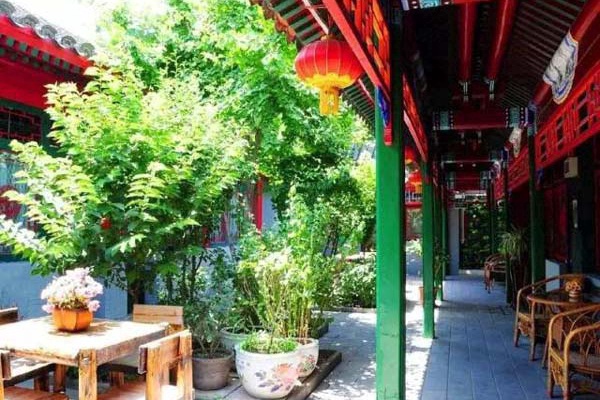
The hotel is located in the Dongsi 4th Hutong where an ancient and secluded courtyard connects the busy business district in Dongsi. As time slips away, things are still there, but men are no more the same ones. In the Dongsi North Street, however, people bustle around among a forest of taverns and shops with flashing neon lights. The century-long folk culture is still visible and touchable. Since ancient times, Dongsi has been the most representative sightseeing area for the traditional culture of Beijing and the best site for learning the folk culture.
Double Happiness Courtyard Hotel, with a structure of traditional Chinese two-tier courtyard, has had a history of more than 200 years. It is said that this courtyard used to be the house of Ji Xiaolan, Grand Secretary of the Qing Dynasty, in the eastern part of the city. There are pavilions, attics, grass and trees in the courtyard, which is elegant and classy with antique flavor. The outlook changes with seasons, which brings a lot of fun. Inside the hotel, a combination of the traditional Chinese hand painting and exquisite wood carving is used. This conserves the style and charm of the dwellings in Northern China and manifests rich cultural connotations.
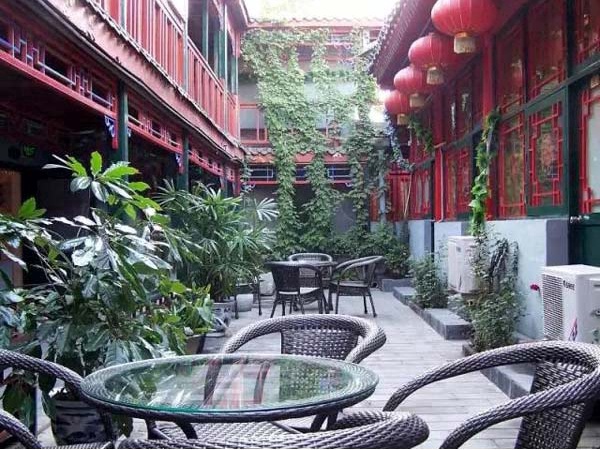
The design of rooms shows great ingenuity. All of the 32 rooms are unique. Surrounded by the full set of wooden furniture from the Ming and Qing dynasties, antiques, calligraphy, paintings and traditional handicrafts of Beijing, you seem to travel through time and come to the era when outer simplicity and inner elegance are highlighted. Meantime, the amenities such as LCD TVs, satellite channel access, small refrigerators, safes, bathrobes, cotton slippers, electric kettles, Chinese-style tea sets, etc. make your life in the courtyard more comfortable and pleasing. A tall antique carved wood bed, which is rare, and an exclusive private balcony, where you can watch the sky of Beijing in four seasons through grey bricks and green tiles, are supplied in some of the deluxe rooms.
Both a Chinese restaurant and a western restaurant are set up on site to cater for different needs. The Happy Bar, which is distinctive in decoration style, has become a scene of the hotel and been well received among visitors at home and abroad. A full Wi-Fi coverage is available in the hotel. The broadband access is provided in the room, and free computers with access to the Internet provided in the bar to make sure that your connection is never interrupted.
Transportation: Taking Line 5 to Exit B (NE), Dongsi Station
Address: No.37, Dongsi 4th Hutong, Dongcheng District, Beijing
Beijing Jingyuan Courtyard Hotel
Located in Xitangzi Hutong, Dongcheng District, Beijing Jingyuan Courtyard Hotel is housed in a three-tier courtyard with a garden, a typical courtyard of Beijing. The hotel, built in the Emperor Yongzheng’s reign of the Qing Dynasty, was a former residence of Zuo Zongtang, Grand Secretary and an important official in the sixth year of Emperor Guangxu’s reign in late Qing Dynasty. During the period of the Republic of China, historical celebrities such as Pu Xuezhai, a Chinese painter with the title of uksun, and Sun Baoqi, a tax supervisor, also lived here. The courtyard has a long history and an elegant environment. You can see corridors, rockery, gardens and ancient trees here.
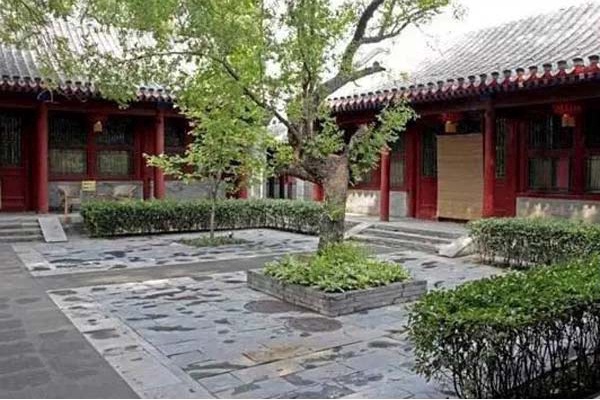
Transportation: Taking Line 5 to Exit A (NW), Dengshikou Station
Address: No.35, Xitangzi Hutong, Wangfujing, Dongcheng District, Beijing
Qianmen Hostel
Dating back to 1875, Qianmen Hostel was a two-tier courtyard with symmetric wooden construction, favored by celebrities in late Qing Dynasty. And now, it has been developed into an international hostel with over 40 rooms.
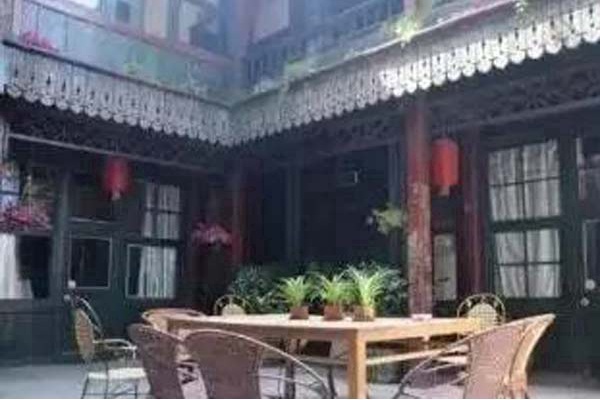
The hostel is small but complete. Passing the reception desk, a small dining room and a lounge, you come to the courtyard. The rooms are in three two- or three-storey buildings. There are two room types: standard room with a bathroom and dorm room for 4-6 persons. The courtyard in the open air is provided with two tables and many chairs where you can drink beer, have a chat and exchange your travel experiences at dusk. Besides, the favorable location of Qianmen Hostel allows access to Dashilan Street and Yangmeizhu Bypass within walk distances.
Transportation: Taking Line 2 to Exit C (SW), Qianmen Station
Address: No.33, Qianmen Meishi Street, Xicheng District, Beijing
Beijing Shichahai Sandalwood Hotel
Beijing Shichahai Sandalwood Hotel is housed in an old hutong in the bustling Shichahai Scenic Area. It was a part of former mansion of Suoni, a founding father in the Qing Dynasty. The hotel is adjacent to the Desheng Mennei Street in the west and the famous Shichahai Scenic Area in the west. Therefore, it is convenient for you to visit the scenic spots and historical sites in Beijing.
Beijing Shichahai Sandalwood Hotel is more a place where you can experience the traditional lifestyle of Beijingers than a siheyuan hotel in the riverside of Shichahai Lake.
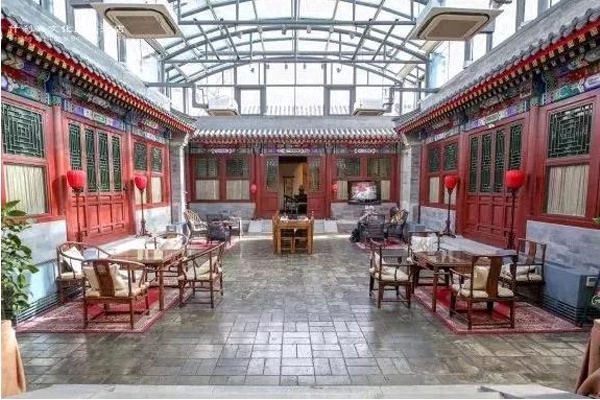
All the expensive sandalwood furniture, valuable antiques, calligraphy and paintings, exquisite carvings, and the fit of bricks and tiles, are telling you the life philosophy and culture of Beijingers in ancient China and their pleasure in life as shown in the saying “Canopy-fish tank-pomegranate tree, and master-fat dog-fat girl”.
Built in strict accordance with traditional cultural rules, the hotel is mainly provided with furniture made of rosewood such as sandalwood and Jinsinan wood as well as solid wood; besides, there are amenities including a library, a bar, a meeting room and so on. All these will offer you a secluded and private environment. The hotel is renowned for sandalwood furniture, each piece of which is rare valuable artwork.
There are 10 characteristic hotels which are comfortable and well-equipped. The courtyard is provided with a ceiling, which makes the courtyard quiet and classy. You can drink tea and chat there.
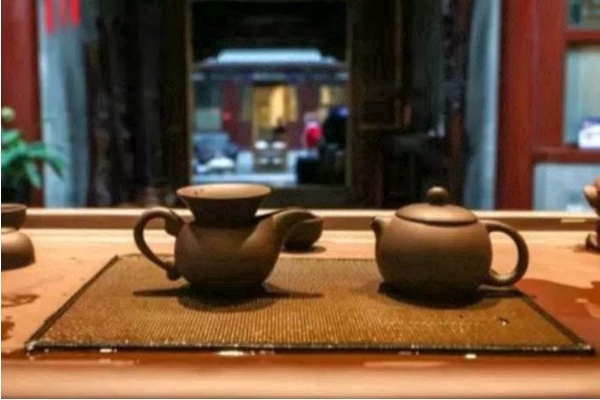
In 2018, Shichahai Sandalwood Culture Experience Center opened. In the traditional two-tier courtyard, which looks classic, exquisite and peaceful, elegant sandalwood and rosewood furniture is scattered so that you can appreciate and use it; besides, some precious articles for amusement and hand pieces are available for you, so you can observe their materials, textures and carving at short range. One step makes a difference here. The rosewood furniture which is rare to see in market, Chinese sandalwood canopy bed which is exquisitely carved, and old furniture from the Ming and Qing dynasties are ready to please you.
Transportation: Taking Line 6 to Exit A (NW), Beihaibei Station
Address: No.42, Xinghua Hutong, Xicheng District, Beijing
VUE Hotel Houhai Beijing
Located in an old hutong in the 1950s, the modern VUE Hotel Houhai Beijing looks eye-catching while in harmony with the hutongs and courtyards nearby. All the shiny chandeliers, unique logos and cool lounges with geometric cuts are showing its character.
The design of the whole hotel is based on regional features and local culture. On one hand, the characteristics of a courtyard are conserved. On the other hand, fashion elements are added for it. All the walls are painted black; the interior of the hotel is outlined by a large number of geometric lines; metal and glass materials add angularity and simplicity of the space; the geometric glass in the outdoor public space increases 3D effect to the entire area.
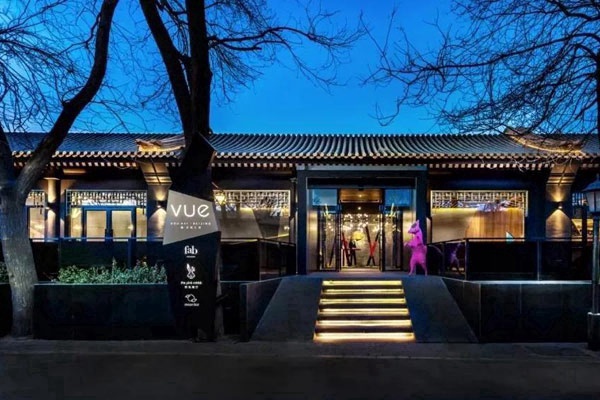
The hotel has a total of 80 rooms. Although it is a Chinese-style building, its decoration varies. There are Chinese eaves and cornice decorations, characteristic zoomorphic ornaments, sculptural balconies, and traditional window lattice. The designer perfectly integrates these features through colors and outlooks.
The room types include standard rooms, park view rooms and suites with view of Houhai Lake. The space of the room is divided with colors and materials, so you may be fascinated by various lines. The asymmetry, however, is regular to some extent. For instance, the cutting of a curtain is unified with that of the floor, and even attention is paid to the transition between shades.
The room is equipped with a bedside control panel instead of a complicated light switch. The panel can switch the light mode and the color for different atmospheres and control the curtains; it also has the Do Not Disturb Mode and Sleep Mode. The bluetooth speaker, which automatically creates a playlist for you according to your likes, adds the sense of future for the room.
A Fab Cafe is provided at the entrance of the hotel. So, you can enjoy your coffee, desserts and afternoon tea, bask in the sun, do office work, or meet a friend here.
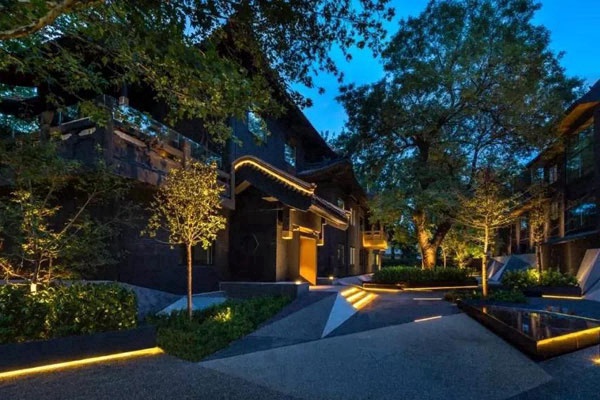
Transportation: Taking Line 8 to Exit A2 (NW), Shichahai Station
Address: No.9, Yangfang Hutong, Deshengmen Inner Street, Xicheng District, Beijing
Beijing Red Lantern House
Located in the Xinjiekou South Street, Xicheng District, Beijing Red Lantern House features a courtyard building of Beijing. As its name suggests, red lanterns, which offer a family atmosphere, are lifted high at night.
The house is divided into three parts. All the suites lie in the eastern area, adjacent to the dorm in the central area. The central area is rich in Chinese elements and decorations. The room is not large, but it looks cozy. It is cleaned every day. The staff is friendly, and the manager plays musical instruments for visitors at every night. The play of a Chinese song is pleasing. It strengthens the emotional appeal of the hotel at night.
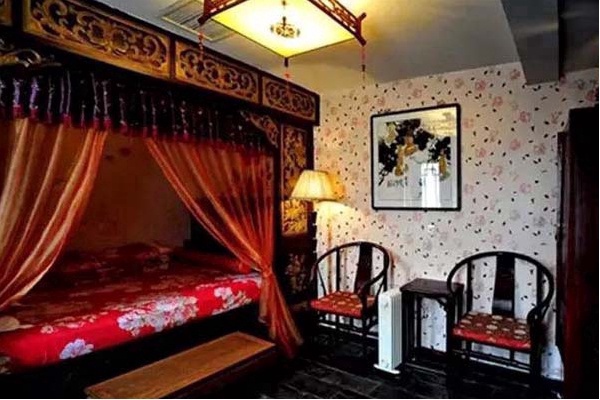
Transportation: Taking Line 6 to Exit B (NE), Pinganli Station
Address: No.5, Zhengjue Hutong, Xinjiekou Street, Xicheng District, Beijing
Beijing Soluxe Sunshine Courtyard Hotel
Compared with other hotels featuring courtyard culture in Beijing, Soluxe Sunshine Courtyard Hotel is distinguished by its largest area and long history. You can see both the outlook of a modern city in the north and the style and features of an old city in the south from the hotel. By this, you can feel the charm of the ancient city. At the former site of two Ming temples named Guangji and Jiaci, Beijing Soluxe Courtyard Hotel undertook elaborate renovations on the entire buildings which are embellished with large scale and elegant decoration in the distinctive architecture style of Ming and Qing dynasties. The hotel is thickly wooded with ancient trees. It is a good choice to experience the traditional Asian culture and the folk culture of the ancient China here.
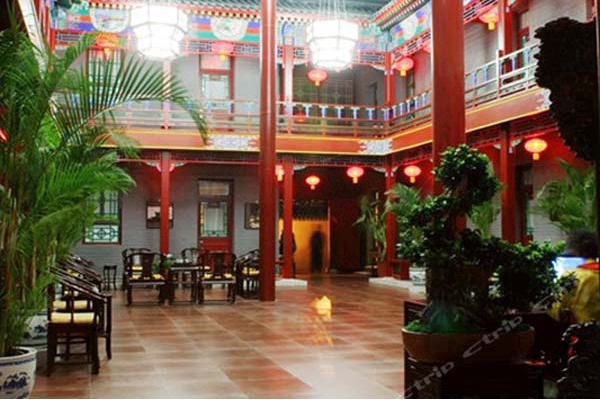
Surrounded by bucket arches and cornices, ancient steles and trees, large screens with handmade peonies and The Orchid Pavilion as well as an antique world clock, you may feel the strong atmosphere of the old Beijing.
Transportation: Taking Line 8 to Exit G (SE), Guloudajie Station
Address: No.2, Xitao Hutong, Gulou Street, Xicheng District, Beijing
161 Hotel (Wangfujing Courtyard)
Located in the heart of Beijing, 161 Hotel (Wangfujing Courtyard) is adjacent to Dongsi Station (Line 5 & 6). You can visit the Tiananmen Square, the Forbidden City, Wangfujing, etc. within a walking distance.
The hotel is housed in a hutong. If you want to live in a siheyuan hotel, don’t miss it. The hotel has a good environment, and it is very clean. It has received many foreign visitors. Set off by the street lamps at night, the lantern at the gate looks classy. The reception is good too. If you take a tour in Beijing with your family members, the hotel will be a good choice for you.
Transportation: Taking Line 5 to Exit C (SE), Dongsi Station
Address: No.64, Lishi Hutong, Dongsi South Street, Dongcheng District, Beijing
DuGe Boutique Hotel
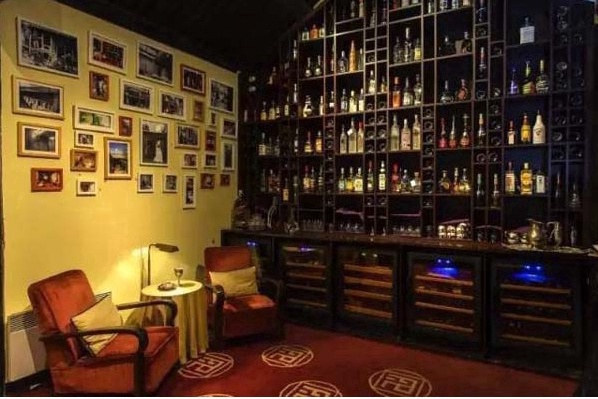
DuGe Boutique Hotel is housed in a part of the mansion of Ming Shan, the Officer of Internal Affairs in the Ming Dynasty. It features a hutong, with each room leading to an open siheyuan. If you spend a day in the siheyuan, you may see sunlight come into the window in the morning and the cloud and blue sky in the afternoon, or a warm lamp casting light on the bamboo in the daytime and the neon light flashing under the moonlight at night. The hotel is located in the Yuanen Temple Hutong, adjacent to the Nanluogu Alley, a popular tourist site. Passing through the Nanluogu Alley, you can look far into the distance for the Bell Tower and Drum Tower, and immediately enjoy quality time in the Beiluogu Alley. In the hotel, you can see warm sunlight in the early morning and experience the accommodation in a hutong. Wish you a happy experience here!
Transportation: Taking Line 8 to Exit E (NW), Nanluogu Alley Station
Address: No.26, Front Yuanen Temple Hutong, Dongcheng District, Beijing
Beijing Daizhu Oriental Beauty Hotel
Beijing Daizhu Oriental Beauty Hotel is situated in Dongshicao Hutong near Jinbao Street, with a 10-minute walk to Wangfujing. The name of the hotel comes from Oriental Beauty Tea of Taiwan, which best explains “the perfect of the imperfect” and “embracing the moment”.
The hotel is rebuilt from two siheyuans, with more than 10 rooms provided. To offer modern comfort, each room is equipped with an independent mini courtyard the amenities of which include a hot spring pond, a full tea set and whole house floor heating.
In the mini courtyard, you can make a pot of Oriental Beauty Tea, view flowers and listen to the rain. What a pleasant life it is!
A siheyuan is the best site for you to explore the culture of Beijing and learn the folk customs. In spite of a busy and noisy world outside, the siheyuan is quiet and comfortable.
Transportation: Taking Line 5 to Exit C (SE), Dengshikou Station
Address: No.47, Dongshicao Hutong, Dongcheng District, Beijing



